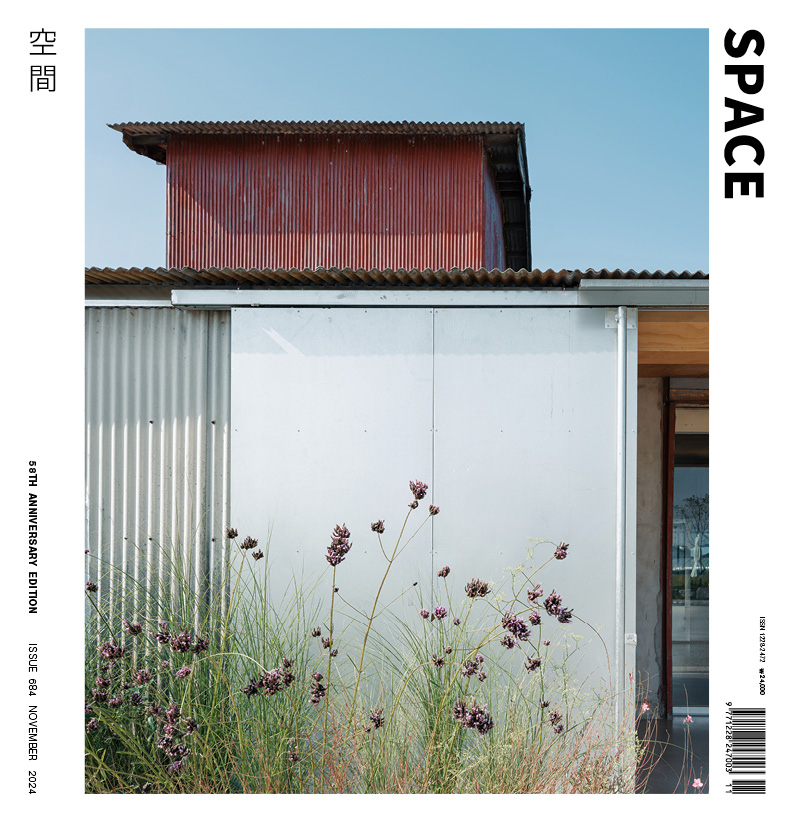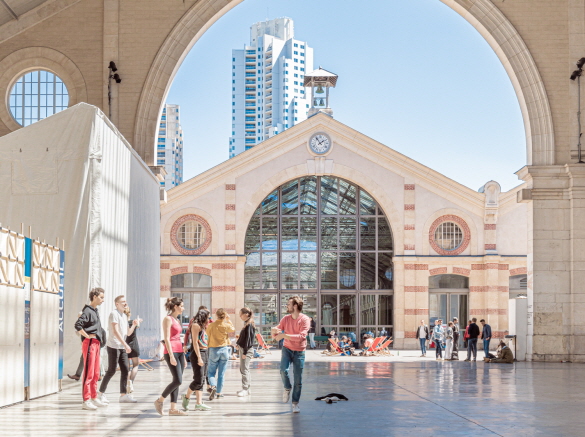SPACE November 2024 (No. 684)
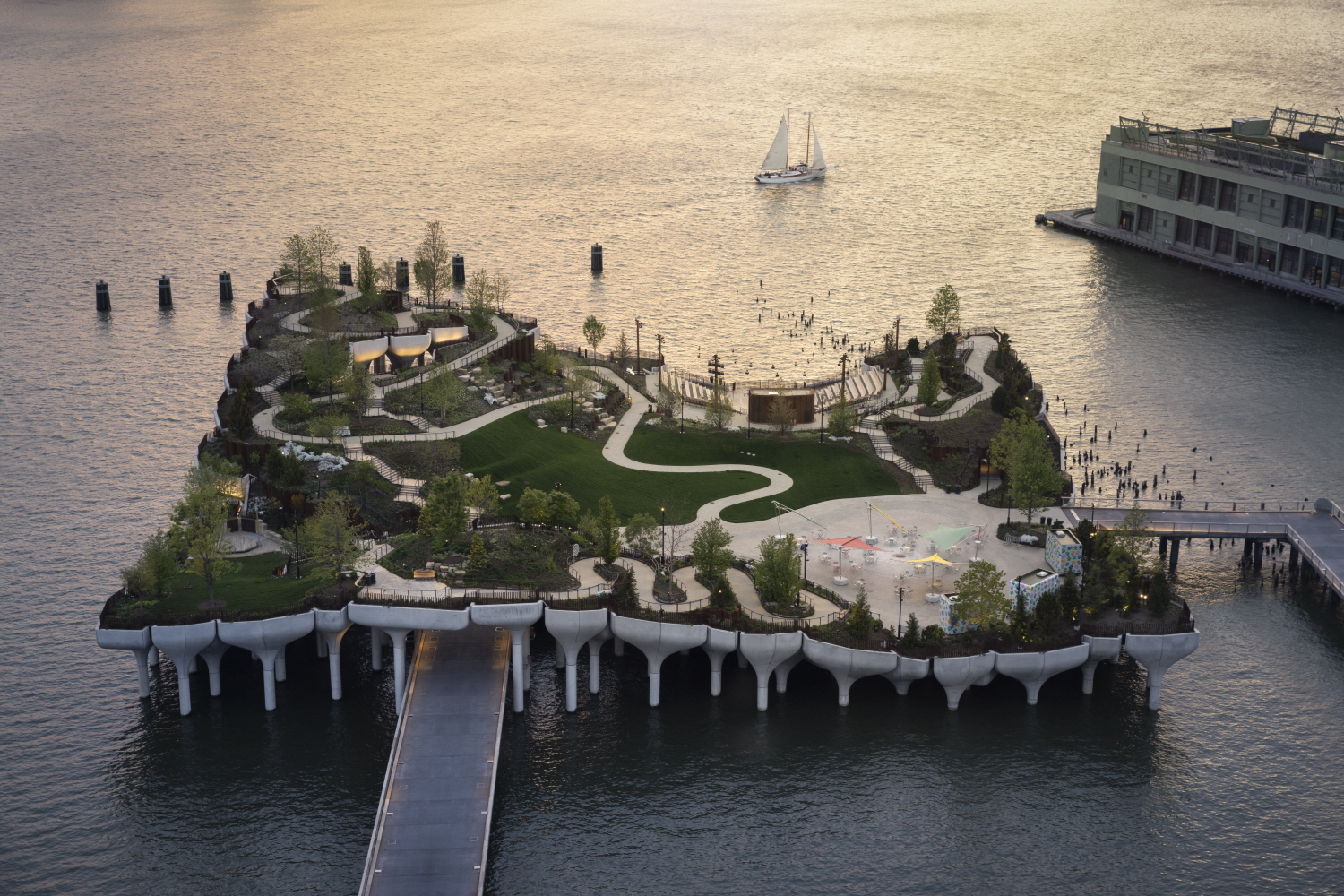
Project Little Island
Architect Heatherwick Studio
Location Pier 55 in Hudson River Park at, W 13th St, New York, NY, U.S.
Area 11,000m2
Competition year 2012
Construction period 2016 – 2017 / 2018 – 2021
Opening May 21, 2021
Client Hudson River Park Trust (HRPT), Pier 55 Project Fund (P55P)
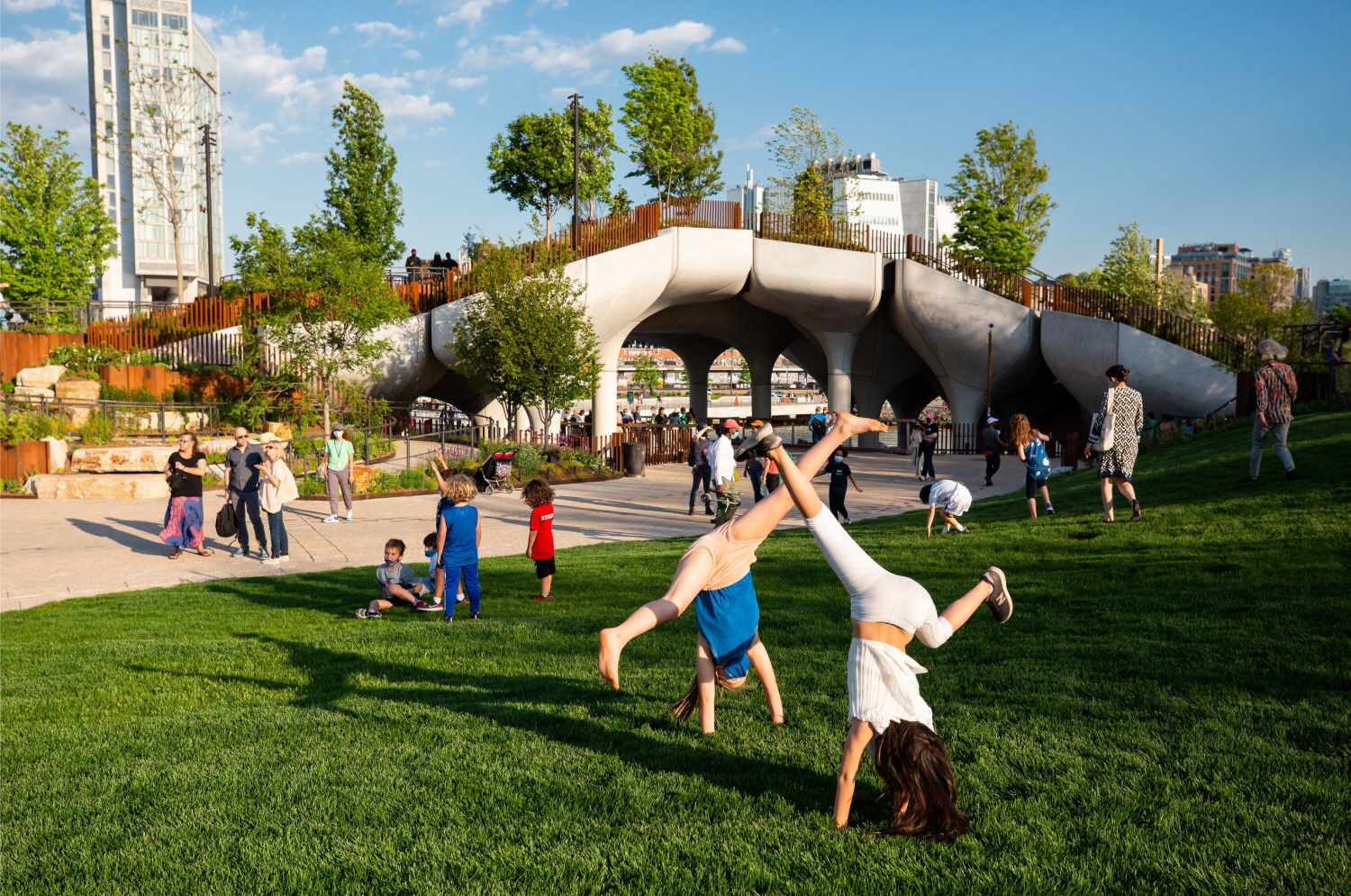
1998 Construction of Hudson River Park begins
2011 Pier 54 closes
2012 The idea for the Pier 55 Project is conceived, senior members of the Hudson River Park Trust discuss with Barry Diller and Diane von Furstenberg about regenerating Pier 54, Hudson River Park Trust senior staff, Barry Diller and Diane Von Furstenberg discuss the Pier 54 revitalisation project
2013 The New York State Assembly amends the Hudson River Park Act, the amended law allows the Hudson River Park Trust to rebuild Pier 54 beyond its original size▼1
Nov. 2014 The Pier 55 Project is officially announced
June 2015 The City Club of New York files its first lawsuit to the state’s Supreme Court
Sep. 2017 New York Governor Andrew M. Cuomo mediates an agreement on the Pier 55 Project
2021 Barry Diller’s close collaborator on performance programming, Scott Rudin, withdraws from public roles after allegations emerge that he verbally and physically abused office staff
Jan. 2021 Little Island’s first artists-in-residence are announced, Ayodele Casel, Tina Landau, Michael McElroy, and PigPen Theater are selected, these artists will plan and perform programs for the first three seasons of Little Island
May 21, 2021 Little Island opens to the public
July – Sep. 2021 The first annual summer music and dance festival takes place
July – Sep. 2022 The second annual summer music and dance festival takes place
July – Sep. 2023 The third annual summer music and dance festival takes place
2023 Zack Winokur is hired as producing artistic director
June – Sep. 2024 The fourth annual summer music and dance festival is scheduled to take place

The Birth of Pier 55, Replacing Pier 54: Little Island
Little Island on the Hudson River in New York (covered in SPACE No. 645) is a project that transformed the abandoned Pier 54 into a new park and performance space, Pier 55. Pier 54, known as where survivors of the Titanic disembarked after their rescue, became a popular space for the LGBTQ community, hosting Pride festivals since the 1980s. After becoming part of Hudson River Park, it was also used for summer events and concert series. In 2011, Pier 54 was closed due to safety concerns, as the piles supporting the structure were rotting underwater. Hudson River Park, where Little Island is located, has been planned, developed, operated, and maintained by the Hudson River Park Trust since the enactment of the Hudson River Park Act in 1998. Although the Hudson River Park Trust is a public benefit corporation established under this law, it does not belong to the New York City Department of Parks & Recreation, and thus relies on private funding for its operation and maintenance. However, the trust faced financial difficulties after the planned development of Pier 40, expected to generate significant revenue, fell through, and the aging pier required 140 million USD in repairs. As a result, the Trust had little funding left for the redevelopment of Pier 54. To overcome this issue, Madelyn Wils, CEO of the Hudson River Park Trust, and Diana L. Taylor, chair of the board, approached Barry Diller and Diane von Furstenberg.▼2 Diller became interested in the project and proposed a more ambitious architectural vision. He suggested holding an informal design competition among four architects, with Heatherwick Studio ultimately winning the bid.
Opposition from Citizen Groups
After the project was made public, several citizen groups raised concerns about its transparency and environmental impact, criticising it as a private takeover of a public space that had also used public funds. The City Club of New York filed three lawsuits in various courts.▼3 One example of the transparency issue was the crucial provision added to the Hudson River Park Act during its 2013 amendment. The New York State Assembly member Deborah J. Glick, who signed off on the amendment, later mentioned that she was unaware of the Pier 55 Project at the time, having agreed to the amendment after hearing Madelyn Wils’ argument about the need for improved access for concertgoers. Although a state judge dismissed the lawsuit regarding public transparency, the case over environmental concerns went through appeals. In September 2017, former New York governor Andrew M. Cuomo mediated an agreement, which allowed the Little Island project to proceed.

Pre-Planning and Consistent Management
The Diller-von Furstenberg Family Foundation is committed to funding not only the construction costs of Little Island but also its operational costs for the next 20 years, including some programme funding. This means that Barry Diller and Diane von Furstenberg will contribute an estimated 380 million USD in total. Since the concept of the Pier 55 Project emerged in 2012, Diller has been working with American theatre and film producer Scott Rudin, the late director, producer, and comedian Mike Nichols, the American playwright and director George C. Wolfe, the director of ‘Billy Eliot’ (2000) Stephen Daldry, and British theater director Kate Horton to plan Little Island’s performance programmes. These plans are being realized through the Little Island team, part of Pier 55 Inc., a company led by Diller. The Little Island team includes an artistic programming team, park facility management team, operations team, and gardening team, allowing for integrated park management. Since its opening in May 2021, Little Island has hosted annual summer festivals, in much the same way as Pier 54 was used in the past. Because it is promoted as a public cultural space, some programmes are offered for free. For example, through the community ticketing programme, free performance tickets are distributed to youth and families in New York City. Although Scott Rudin stepped down from several Broadway productions after accusations of verbal and physical abuse towards his staff, he continued to be involved in Little Island’s programming due to his close relationship with Diller. In 2023, Zack Winokur was hired as artistic director to reboot Little Island’s programmes.
How Public Is a Private Cultural Space?
When performances are not scheduled, Little Island serves as a park where local residents and tourists can relax and take a stroll. True to its name, Little Island is small enough to walk around in about 10 minutes. However, bicycles and skateboards are prohibited, and except for service dogs, pets are not allowed, meaning even walking your dog is not possible. It feels more like a performance venue disguised as a park, rather than a park truly open to the public. While private management has its advantages, it is not without drawbacks. This system, however, is common in the United States. Since the 1970s, there has been a growing trend in New York City to privatise park management. Iconic green spaces such as Central Park, Bryant Park, and Union Square Park are run by local organisations funded by real estate owners and private donors, not by the city’s parks department. Other U.S. cities like Chicago with Millennium Park and Dallas with Klyde Warren Park have adopted similar systems.
While private, non-profit organisations managing parks is a way of addressing the city’s financial constraints, this system has raised concerns about public access. For example, during fundraising events, these parks may restrict access to the public. Additionally, as private donations increase, government funding for park management often decreases. Private funding tends to flow to parks in wealthier areas, leaving parks in poorer neighbourhoods underfunded and increasingly dilapidated. This deepens the divide between public spaces in affluent and impoverished areas. Although Diller claims Little Island was built ‘completely in the public’s interest’, one must question who is included in that ‘public’ and who is left out.
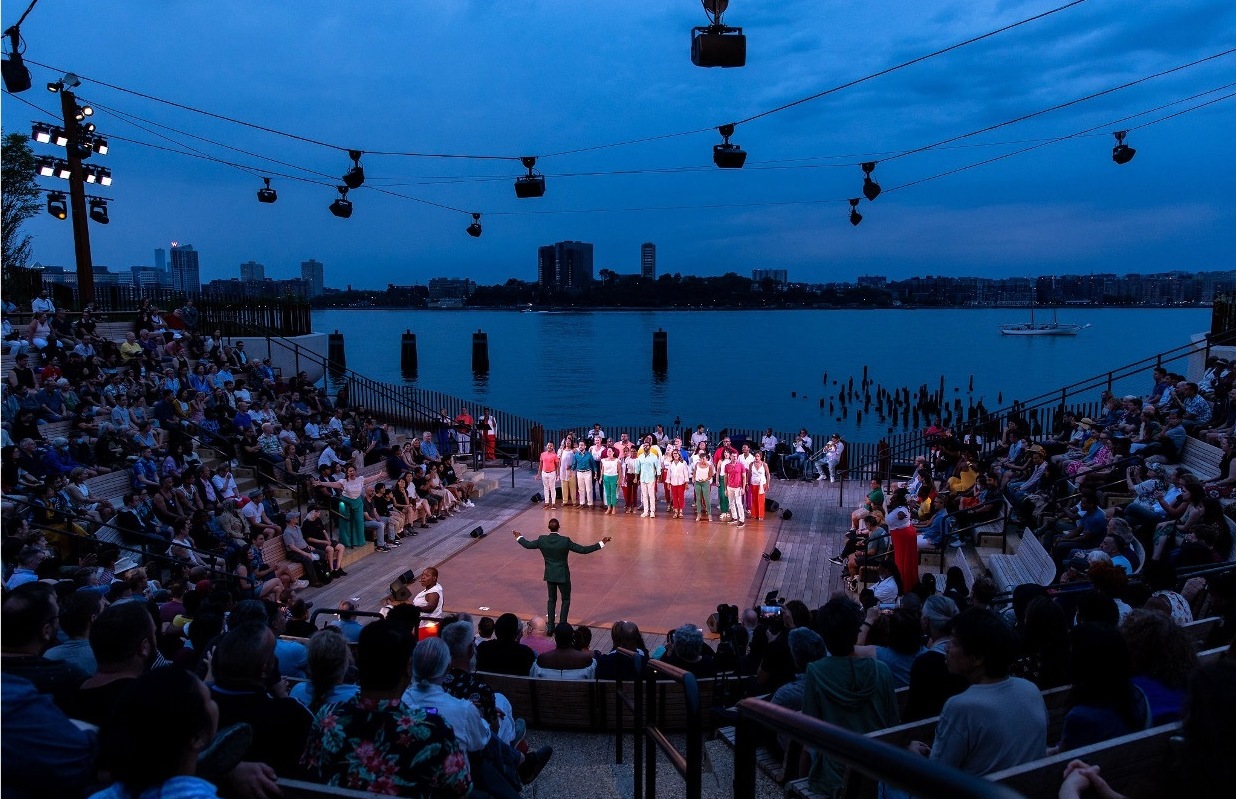
©Rebecca J Michelson
_
1 However, reconstruction was permitted on the condition that the pier’s length does not exceed 700ft, the total area is less than 150,000ft , and historical elements, including the steel arch, are preserved.
2 Barry Diller and Diane von Furstenberg are among the largest donors to the High Line Park, having made one of the most significant contributions.
3 It was revealed that the legal fees for the City Club of New York’s lawsuit were covered by Douglas Durst, another wealthy individual and former board member of the Hudson River Park Trust. (Charles V. Bagli, “Clash of Titans? Opponents of Pier 55 Have Secret Backer, Media Mogul Says”, New York Times, 4 Sep. 2016, https://www.nytimes.com/2016/09/05/nyregion/pier-55-park-chelsea-barry-diller-douglas-durst.html, accessed 10 Oct. 2024.)
